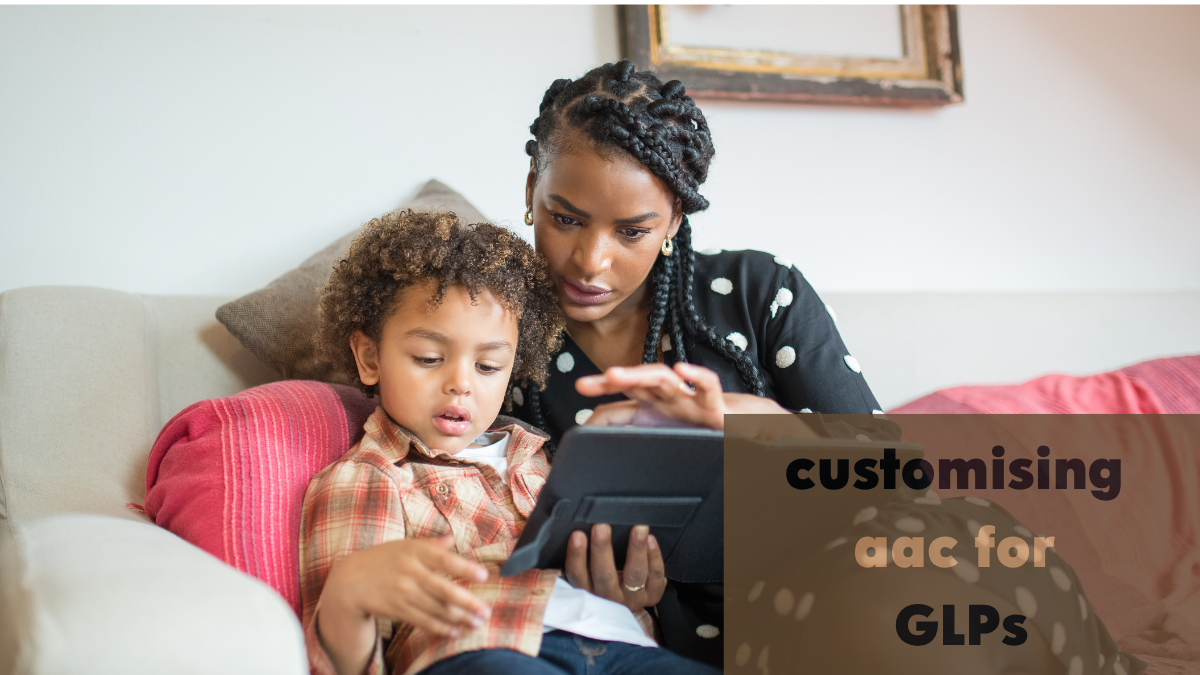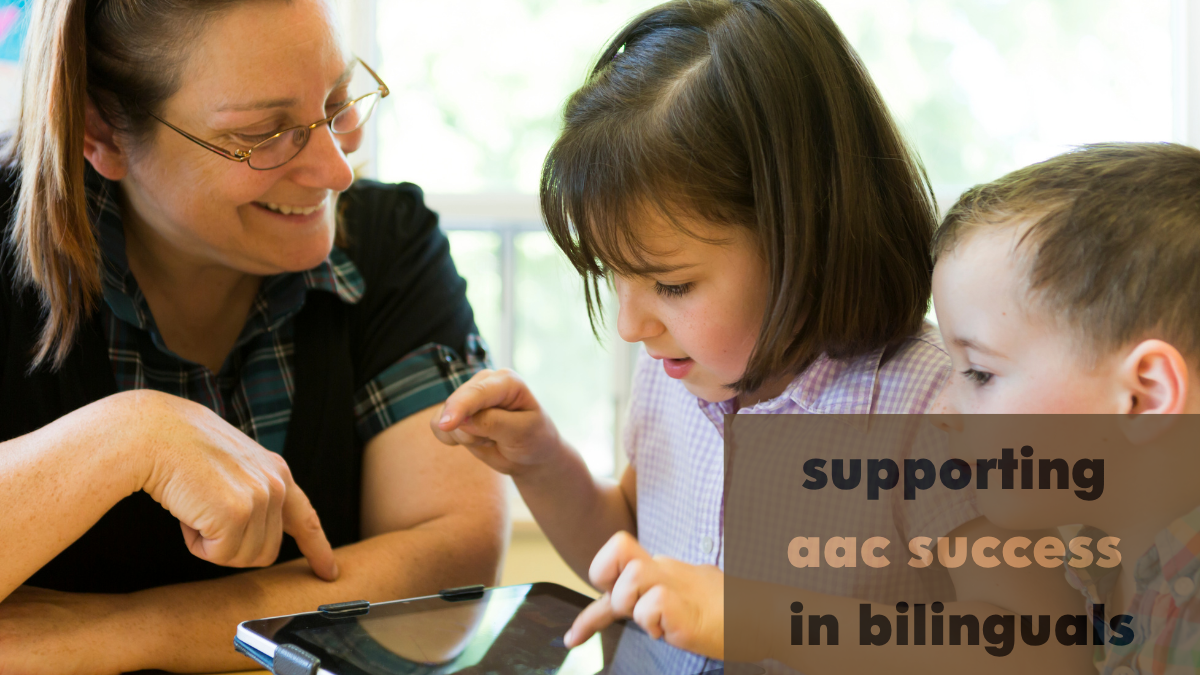Tele practice has become the norm of the day and AAC Teletherapy is no exception. With all the tools available in various platforms, Tele AAC can be as good as, if not more effective than in-person therapy. Virtual sessions have also brought about a shift in the roles of the team members. Service delivery has shifted from the expert model to the collaborative model.


The biggest benefit of virtual sessions is probably that there can be more collaboration between the professionals and the communicative partners. Be it, parents, siblings, friends or other professionals working with the AAC users, observing AAC usage at home or in their special education session is becoming possible in tele-practice. This results in greater chances of integrating AAC into the child’s everyday life.
With this massive shift in service delivery, a very important factor for AAC success is the communication partner. Their attitude, fluency with the device, knowledge and implementation of strategies plays a phenomenal role in AAC success. The child is on the other side of the screen and not there with the therapist. Therefore, coaching communication partners in Tele AAC sessions is of paramount importance.
Benefits of coaching Communication Partners


Research shows that when we instruct parents on how to model AAC
- Both parent and the child become comfortable with the device
- There is an increase in AAC use at home
- Children start using more words on the device
In other words, parent training is the key to Successful AAC implementation. Coaching parents during AAC Teletherapy to do it the right way is the need of the hour.
Important Considerations Prior to Coaching:
It is pertinent that we have information on the following areas
- Ask the communication partner what they already know about AAC and the device.The skills/vocabulary that they wish to prioritise first.
- Their time availability -how long and when is the best time of the day that they can interact with the child. This is very important to set realistic goals and expectations. It will give us an insight into the context and the vocabulary we can target. Knowing the time they can commit especially because parents can be already stressed out working from home. Moreover, parents’ fluency with technology may also vary.
- Getting all family members involved lessens the burden placed on a single communication partner- who is usually the mother. Consider training peers, siblings, attendants, and others who are frequently with the AAC user.
- Help the family identify times of the day to model.
- Urge them to focus on engagement and enjoyment. Learning happens best when these two elements are involved. It is best to refrain from testing the child
- Help them learn to model comments, questions and social interaction depending on the goal- not only requesting.
Important Considerations During coaching :
- Let them know which strategy you want them to use, why do you want them to use it and how to use it.
- Demonstrate Aided Language Stimulation and other strategies for them to learn in as many natural contexts as possible. Give them time and let them show you what they have learnt, for you to give your feedback.
- Give precise feedback.
When Rama pointed to the ball, you modelled “want ball” before giving it to her. That was helpful! - Reflect together on how to make it better.
Do you think waiting time would have made him ask for the biscuit spontaneously? - Getting parents to document success helps in boosting not only their morale but also that of the user.
- Use simple and clear goals.
Irrespective of whether the sessions are asynchronous (recorded) or synchronous( live), we need to keep the above points in mind.
Other important considerations
- Get them connected with other caregivers and parent groups in social media where they can discuss amongst themselves and try to find answers.
- Remind them time and again that Learning AAC takes time- that progress is progress no matter how much.
How else can you help?
- Share videos that help parents understand modelling
- Consider asynchronous sessions for the benefit of students and family
When the focus is on small steps, parents are less overwhelmed. For many families helping them to take the device and making it accessible to the Avaz AAC user during all of his waking time is often the first step. So, work with them to find out how they can take the first step through AAC Teletherapy and keep going.
WRITTEN BY
Niveditha Ryali
Speech – Language – Swallowing Therapist
I have 16 years of learning experience that comes from working in NHS(UK), special schools, hospitals and private practice. I am passionate about working on improving Speech, Language and Swallowing skills in children and adults. I also strive to facilitate early communication in children with complex communication needs, thereby improving parent-child bonding.


References:
How we do it: Coaching AAC use in natural environment
There’s No place like home-supporting AAC at home by Kate Ahern



